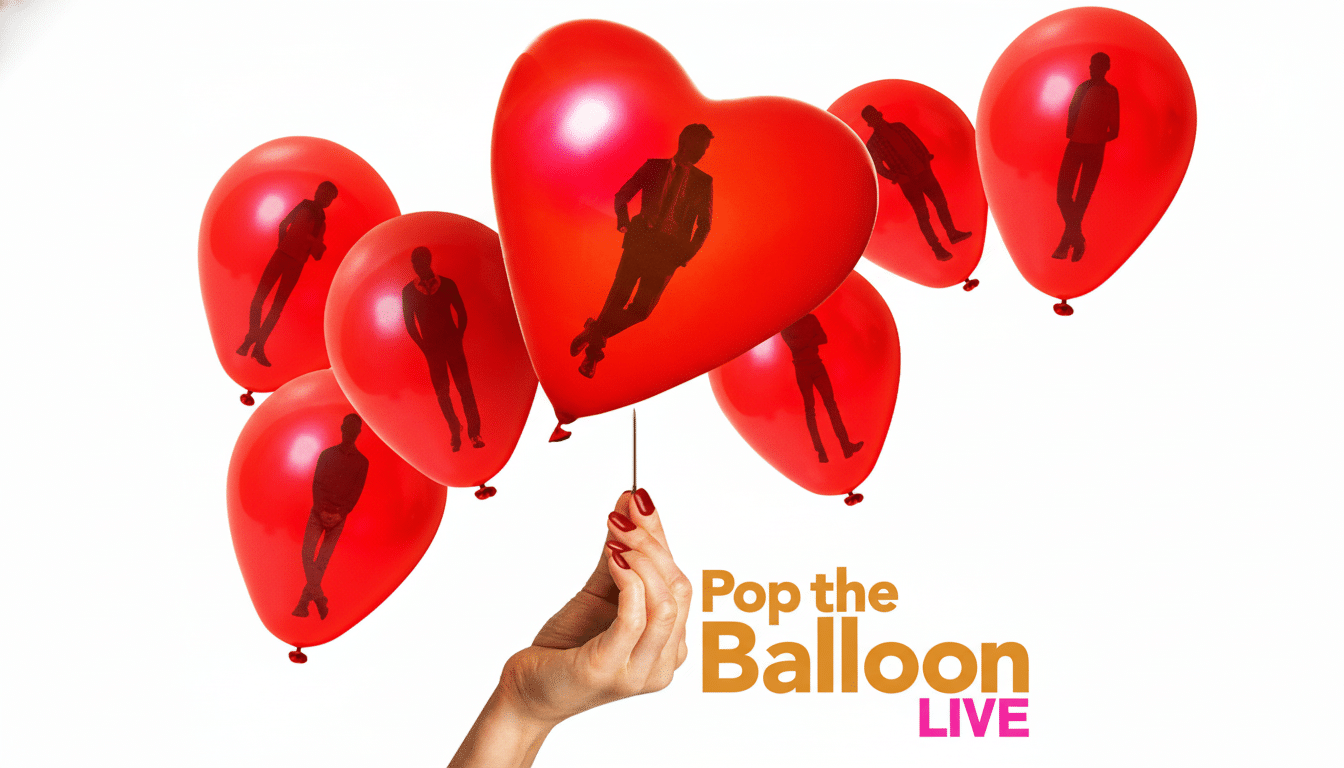Pop the Balloon or Find Love, the YouTube sensation that brought speed-dating to the screen by killing off half of its contestants via balloon pops until one partner emerges victorious, is getting a product spinoff in the form of a new dating app created by Arlette Amuli and Bolia Matundu, better known as BM. The move formalizes a pipeline that runs from viral content to real-life matchmaking, transforming a hit format into a platform on which viewers can actually meet the singles they watch every week.
The show’s premise is deceptively simple: singles stand in a line, eye each other for seconds, and if they don’t feel a spark, pop a balloon and move on. Episodes commonly receive one to two million views and have carved out a unique lane in the crowded dating content ecosystem. Now, its creators say the app will also offer typical features such as matching and chat so that fans can connect with one another, along with a twist specific to this particular show: some contestants from the series itself will become active on the platform.

What the App Promises Beyond Typical Matches and Chats
More than the usual swipes and matches, the hook is access. Including on-screen daters within the app provides fans a physical connection between the show and their own dating experiences. That type of crossover is rare on mainstream apps, where discovery tends to be much more anonymous. There are no specifics on pricing, verification, or algorithms from the creators yet, but the positioning is clear: a community-driven alternative filled out by an existing cast and common sense of humor about modern dating.
If the product replicates satisfying high-velocity chemistry checks, you get a model of user experience delivery that values quick decisions and visible feedback. The trick will be figuring out how to translate the spectacle of a live taping — group dynamics, social proof, immediate reactions — into mechanics that still feel respectful and safe when you are the one making choices on a screen.
From Viral Series To Multiplatform Franchise
Pop the Balloon or Find Love has already shown that it can travel. A Netflix adaptation hosted by Yvonne Orji introduced the format to a wider audience, and there is a UK spinoff in the works. That breadth is important for a dating app: Local density dictates whether users can find decent matches, and cross-market familiarity can help provide liquidity in multiple cities at the same time.
It is also one of the few breakout Black dating shows that feel like appointment viewing even in 2020, with many people posting to social media during each episode. It is in that cultural specificity, not a lack of it, that it gets its strength. Apps that put a niche or community first, like BLK and Chispa, only serve to prove the point that these spaces can yield a more engaged user base and better yields when the product matches users’ lived experiences.
Why a Creator-Led Dating App Might Work for Fans
Creator distribution is the new user acquisition engine. By avoiding paying for installs with generic ads, the show can sell directly to an audience already primed for its vibe and values. Even a very conservative conversion scenario paints the opportunity: if 1% of one million viewers from an episode try the app, that is 10,000 sign-ups per drop — more than enough to seed local communities and drive matching.

There is also a macro tailwind. According to Pew Research Center, 30 percent of Americans have used a dating app or site, and usage is particularly high among people under the age of 30. As put in the show’s opening credits, “Let’s face it: Dating is hard.” Industry trackers like data.ai report that consumers worldwide spend $5+ billion a year on dating apps, and incumbent brand Tinder boasts roughly 10 million subscribers, according to Match Group filings. That is a large market where new angles continue to find traction, as can be seen from video-first entrants and meme-based matching concepts.
What Success Will Require to Keep Users Safe and Active
Safety and moderation will play into longevity. Photo verification, seamless reporting of harassment, and speedy takedowns are table stakes; many platforms today already rely on artificial intelligence to intercept abusive behavior before harassing messages end up in users’ inboxes. The Online Dating Association provides guidance on protection and transparency, and the recent attention from the Federal Trade Commission (FTC) is a lesson that dark patterns in subscriptions or nudging should be avoided.
Background checks can be tricky territory — a highly publicized partnership between Garbo and one of the major dating companies flamed out — but crystal-clear advice about in-person safety, block tools, and community rules sets the tone. Equally critical is matchmaking liquidity. Creator-led apps can drive downloads in waves; the real challenge is maintaining balanced numbers of men and women who are active, making sure that new users see fresh profiles fast, and avoiding ghost towns in smaller markets.
The Bigger Bet On Community And Chemistry
For fans, the app is an enticement to transition from observing to participating. For the creators, it’s a gamble that authenticity — the awkward pauses, the no-thank-yous and lightning-strike yeses — is a better on-ramping to relationships than glossy marketing. It unlocks a flywheel: App users can move up to on-camera jobs, on-camera charisma can pull new people into the app, and live events can stitch both worlds together.
If Pop the Balloon or Find Love can bring its chemistry-first ethos into a product that feels fun, safe, and truly social, it will not just be another dating app flying dangerously close to the power lines known as Tinder. It will be a lesson in how creators’ franchises can convert viewership into communities that last — and how the next wave of online dating might be constructed as much in studios and comment sections as in code.

